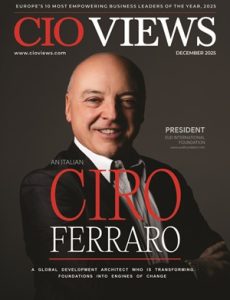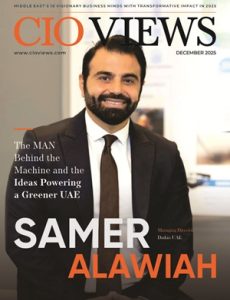In “The Strategist: Be the Leader your Business Needs”, esteemed Harvard Business School strategy professor and author writes:
“… strategy is … bedrock crucial to every company. No matter how hard you and your people work, no matter how wonderful your culture, no matter how good your products, or how noble your motives, if you don’t get strategy right, everything else you do is at risk.”
‒ Cynthia A. Montgomery
Strategy matters, hugely, yet very few companies know how to “Get Strategy Right!”, systematically and step by step.
“Every company wants one, yet very few companies have one, a compelling strategy.”
− W. Chan Kim & Renée Mauborgne
“Reflecting on my experience, … I’d have to say that the worst mistake—and the most common one—is not having a strategy at all.”
– Michael E. Porter
“Most companies have strategies that are quixotic, muddled and undifferentiated.”
– Gary Hamel
“Bad strategy abounds. … Corporate boards sign off on strategic plans that are little more than wishful thinking.”
─ Richard P. Rumelt
There you have it from six of the top professors in the strategy field; and every one of them knows the reason “Why?”: because there’s a big missing piece—i.e., the “how to” prescription for crafting and executing effective business strategy, remains elusive. That essential knowhow has been missing since the very beginning, when in the late 1950s and early 1960s the notion of business strategy first came to the fore.
Academics (i.e., B-school strategy professors) call that missing piece a “Theory of Strategy Creation”.
The Strategy Industry’s Fundamental Flaw
In any true profession (whether medicine, engineering, architecture, financial accounting, computer science, etc.), if practitioners did not know how to do something that really mattered, alarm bells would go off. Those with expertise and vested interests would join forces to create (discover) the requisite knowledge, bring it forth, and apply it to effect decisive change for the better.
That has not happened. Instead of providing any actionable prescriptions, the strategy industry has generated scores of competing paradigms, models and frameworks, as John Kay predicted, more than thirty years ago:
“The subject of strategy which I have described falls a long way short of an established discipline, characterized by a widely accepted organizing structure and a growing body of empirical knowledge. Indeed, the strongly commercial orientation of the strategy business itself conflicts directly with this objective. The traditions of scholarship demand that each author should explain, carefully how his contribution relates to all that has gone before; [in contravention] the dictates of profit suggest that each consultant should dismiss as bunkum the theories of his rivals and proffer his own nostrums as the one true solution.”
– John Kay (“Foundations of Corporate Success” ©1993-1995)
The Staggering Cost of Strategic Weakness
The resulting costs of profound, pervasive, and persistent strategic weakness (dearth) have proven staggering to businesses, business stakeholders and society at large, long term. To explain the 50-year steady decline in return on assets (ROA), down by 75% from 1965 to 2015, for over 20,000 publicly listed U.S. companies, the authors of the “Shift Index” report wrote:
“Companies lack a clear vision or the ability and commitment to execute a long-term strategy.“
− Deloitte Center for the Edge
Arguably, for every $1.00 earned over fifty years, companies left $1.95 on the table. That’s a lot of foregone wealth creation!
Our featured strategist, Richard S. (“Dick”) Melrose, an engineer/MBA (Purdue/Dartmouth-Tuck), former international industrial CEO, and strategic advisor to clients ranging in size from start-ups to F25, chose to directly address this business leadership challenge and profound societal need.
Breakthrough Universal Strategic Framework™ (USF™) Development
Mr. Melrose founded Vision21 in early 2002, as a business transformation and strategic advisory management consulting practice, to help C-suite Executives and Corporate Directors surmount their most pressing challenges and convert their most promising opportunities. Dick knew that historically more than 70% of major business transformations fail to achieve their intended results. His own experience as an international industrial CEO informed his perspective on common business transformation challenges, as well as on the tools and techniques available for dealing with them, systematically, while dramatically raising the odds of success.
Melrose’s first-hand business leadership experience with continuous improvement, talent management, knowledge management, and value innovation campaigns gave him confidence that prospective clients would share similar priority needs that would yield to proven management disciplines, which he could deliver, routinely. That turned out to be the case, which Peter Drucker had aptly termed “a common business reality”.
The Pivotal Realization
Initially, Dick thought of Business Transformation and Strategic Advisory as two different practice areas. Meanwhile, as a strategist, Melrose felt challenged by strategy guru Gary Hamel’s confession of the strategy industry’s “dirty little secret”—i.e., the lack of any viable (or generally accepted) theory of strategy creation:
“Anyone who claims to be a strategist should be intensely embarrassed by the fact that the strategy industry doesn’t have a theory of strategy creation! It doesn’t know where bold, new value-creating strategies come from. There’s a gaping hole in the middle of the strategy discipline. No, let me put that differently: there’s no foundation to the strategy discipline.” I mean, really!”
‒ Gary Hamel (Sloan Management Review, Winter 1998)
Rather than settle for feeling “intensely embarrassed”, Dick recalled Peter Drucker’s favorite urging to his clients: “What are you going to do about it?” Melrose then thought: “Isn’t business strategy the ultimate goal-directed business transformation—i.e., to secure the future of the business and the business of the future?” Yes, of course it is! So why wouldn’t some of the same proven transformation tools and techniques work to advance a viable theory of strategy creation, or at least afford a promising direction toward a workable solution?
The Breakthrough Moment
That line of thought (opportunity) stuck with Mr. Melrose. Then, in the fall of 2009, shortly after his visit with Lisa J. Scheinkopf, author of “Thinking for a Change: Putting the TOC Thinking Processes to Use”, Dick had an “Aha! moment” and envisioned how the latest logic tree addition to the TOC-TP might enable the advancement of a long-sought-after deep, dynamic theory of strategy creation.
In a matter of two- or three-months’ time Melrose satisfied himself that he was on the right track. Nevertheless, it took the better part of six more years for him to develop, refine, challenge, and validate his conception of a Universal Strategic Framework, to his full satisfaction.
USF built upon the foundation of the Theory of Constraints‒Thinking Processes (TOC-TP) Strategy and Tactic (S&T) Tree logic architecture, which Dr. Eliyahu M. Goldratt and colleagues published into the public domain in 2002. Accordingly, the direction of the solution had been hiding in plain sight for years. In 2010, a year before his untimely passing, Eli Goldratt wrote:
“The Strategy and Tactic tree (S&T) is probably the most powerful tool of the Thinking Processes. … It is the logical structure that enables focusing. Starting from the company’s strategic objective, it logically derives what actions (and in which sequence) must be taken and which actions should not be taken.”
What more might any business leader or strategist want from a strategy framework?
Moreover, as it turned out, Melrose was not the first to adopt/adapt TOC-TP logic trees to the challenges of crafting and executing effective strategy. H. William (“Bill”) Dettmer, a highly regarded TOC-TP consulting practitioner and author of “Strategic Navigation: A Systems Approach to Business Strategy” (©2003) had done so with his Constraints Management Model (CMM), which was the subject of his strategy book.
Dettmer based his CMM upon the TOC-TP Intermediate Objectives Map (IO Map), which Bill later renamed the “Goal Tree”.
It’s also worth noting that much of the work product of the high-priced strategic advisory firms (McKinsey, Bain, BCG, and their wannabes) derives from “behind-the-curtain” logic tree analyses.
What Makes USF Revolutionary
Dr. Goldratt’s profound S&T Tree insights and Melrose’s adaptations at the top of the tree, distinguish USF by enabling breakthrough advances, with mainstream appeal. Melrose integrated and harmonized decades worth of diverse strategy thought leader contributions, while resolving several scholarly controversies (e.g., the deliberate vs. emergent strategy debate) that had tended to impede forward progress toward a deep theory of strategy creation.
From 2003 to present Goldratt Consulting (GC) has used the S&T Tree as the foundation of its global strategic advisory practice, “Viable Vision”. Those engagements fully validated the S&T Tree logic architecture, while delighting GC clients with performance improvements far beyond their expectations.
In the preface to the expanded edition of their bestselling “Blue Ocean Strategy: How to Create Uncontested Market Space and Make the Competition Irrelevant” (©2015), perennially top-ranked global management thinkers and esteemed INSEAD strategy professors write:
“… we don’t have a theory of strategy creation. …There is no step-by-step model that prescribes in specific terms how companies can formulate and execute their strategies to obtain high performance.”
– W. Chan Kim and Renée Mauborgne
USF does precisely that, systematically and step by step, with all the rigor of cause-and-effect logic, thoroughly documented assumptions, extensive leadership guidance, and much more.
Technology Support and Accessibility
Flying Logic® is professional desktop software for visual reasoning and decision analysis, developed and published by Arciem LLC. The application originated from an initial Northrop Grumman–funded effort to support Course of Action (COA) analysis within the U.S. DoD’s Military Decision-Making Process (MDMP); it has since been independently developed and released commercially by Arciem. Flying Logic supports TOC Thinking Process diagrams—including Strategy & Tactic (S&T) trees—and helps teams model cause-and-effect logic to plan and execute complex initiatives. A free “reader” mode lets stakeholders open, explore, and print or export models; authoring features require a paid license. Learn more here.
The Universal Goal and Critical Success Factors
USF codifies Dr. Goldratt’s one Goal, “no matter what the company”—i.e., “to become ever flourishing”—with the ‘how to’ modifier: “by compounding purposeful value creation and capture in concert (virtuous cycle) with burgeoning organizational health.”
USF identifies the five generic Critical Success Factors (CSFs) that constitute individually necessary conditions for, and collectively sufficient cause of Goal attainment, in any business regardless of its size, scope, maturity or industry, hence “universal”.
“A clearly articulated goal and critical success factors are the heart and soul of an effective strategy. They provide the focus for all subsequent efforts. They can also help define the metrics that [business] system leaders use to determine whether their efforts are succeeding.”
– H. William Dettmer
Importantly, Flying Logic makes USF advancements much easier to apply by facilitating Dr. Goldratt’s S&T tree logic architecture, which USF adopted in its entirety. In essence, USF guidance sets the stage for exploiting proven S&T Tree cause-and-effect logic, with the added benefit of powerful, affordable, user-friendly, self-documenting, visual facilitation, and validation. That combination enables a robust, unambiguous, ongoing, stepwise, prescriptive strategy process to reside within a single system of record that gives business leaders unprecedented visibility into execution progress and performance.
The Diamond Standard™ Business Purpose
USF helps business leaders and strategists to architect, articulate, steward and operationalize their “Diamond Standard™” business purpose:
“Purpose is where performance differences start. Nothing else is more important to the survival and success of a firm than why it exists, and what otherwise unmet need it intends to fill. It is the first and most important question a strategist must answer. Every concept of strategy that has entered the conversation of business managers ─ sustainable competitive advantage, positioning, differentiation, added value, even the firm effect ─ flows from purpose. … Above all, a good purpose sets the stage for value creation and capture.”
– Cynthia A. Montgomery (“The Strategist” ©2012)
Mr. Melrose’s conception of the Diamond Standard Purpose draws upon the writings of several influential authors in the business purpose space, including, Roy M Spence, Jr., Nikos Mourkogiannis, and Hubert Joly, among others. Quality diamonds like quality purposes are clear, compelling, durable and connection-worthy, in distinctive and concentrated service of societal utility. Those seven italicized criteria, if scored on a 1-5 Likert scale, should add up to an aggregate score of at least 30 (out of a maximum of 35). The Diamond Standard includes scoring guidance for each criteria.
For more information, visit: https://vision21.us.





